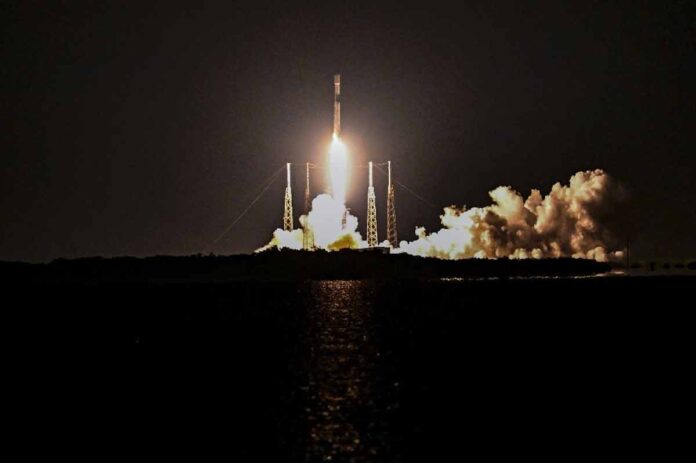SpaceX’s Falcon 9 rocket will launch from Space Launch Complex 40 at the Cape Canaveral Space Force Station in Florida at 2:09 p.m. IST.
On November 30, SpaceX plans to launch the UAE’s first lunar rover mission. When the launch window opens at 2:09 pm IST on December 1, the rover will be launched aboard the Falcon 9 rocket from the Space Launch Complex 40 (SLC-40) at Cape Canaveral Space Force Station in Florida. A backup window is available on December 1 at 2:07 pm IST.
The Mohammed Bin Rashid Space Centre-developed rover is being launched to the Moon inside a lander built by Japan’s private firm ispace. It has been named the mission M1. The Emirates Lunar Mission (ELM), aims to explore the Mare Frigoris (Sea of Cold) region of the Moon.
Rashid, the rover, weighs 10 kg. And its exploration mission is expected to last one lunar day or 14 Earth days. Rashid will deploy its suite of instruments to help researchers better understand the moon’s electrically charged environment. It will happen once ispace’s lander named HAKUTO-R touches down at the Atlas crater on the southeastern outer edge of Mare Frigoris.
Rashid chose Mare Frigoris as an exploration site. Because it has never been explored before. It will provide continuous illumination from the sun. And it will provide communication visibility from Earth, among other benefits. This mission is a technology demonstration for ispace that will aid in the development of advanced landers for future missions.
The Lunar Flashlight CubeSat, developed by NASA’s Jet Propulsion Laboratory, is also aboard the two-stage rocket. The CubeSat is no bigger than a shoebox. It will map ice deposits on the Moon from orbit to determine where they exist on the surface. And if there are enough to sustain future lunar colonies.
The Lunar Flashlight is inspired by the idea that discovering abundant water beneath the Moon’s surface will provide breathable oxygen and rocket fuel. It transformed the Moon into a fuel depot for missions to Mars and beyond.

